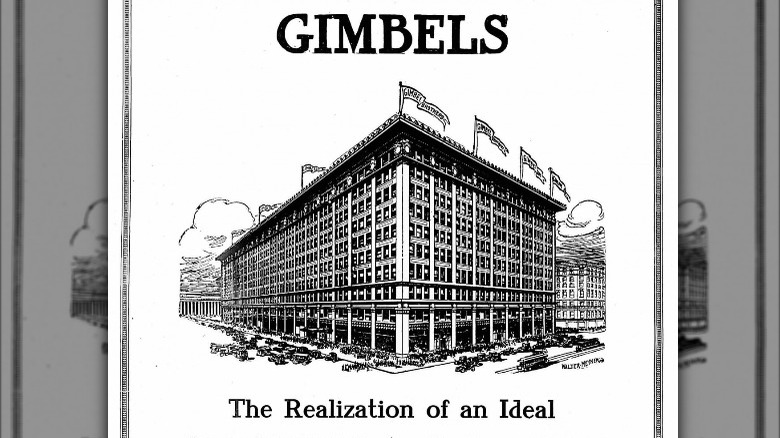What Happened To The Slinky?
War. Divorce. Bolivia. Somehow, if you compared the history of the Slinky and the background of Ernesto "Che" Guevara, they'd have a few surprising words in the middle of a Venn Diagram. And like Guevara, the Slinky has had an astounding impact on pop culture, having shown up on The History Channel's and The Discovery Channel's Top 10 toy lists for the entire 20th century, received a commemorative stamp, and even pre-empted Jean-Luc Picard by hitching a ride on the Space Shuttle Discovery in 1985 (per Inc).
Yet, many questions about the Slinky's existence remain. How did a long thin strand of metal coil become one of the best-selling toys of all time? Who were the people behind its success? Can you still buy a Slinky? And, do you suddenly have the urge to find a staircase to test one out? Let's ... do the opposite of slink and jump right in!
It was all just an accident
It was 1943, and World War II was raging. The military industrial complex was in full swing throughout the U.S., from abandoned gold and silver mines getting re-excavated in California, to ships being assembled in Pennsylvania. And it was at the Port Richmond Naval shipyard in Philadelphia where a mechanical engineer by the name of Richard James was doing his part.
Per Whyy, James' role was to create a new line of stabilizers for navigation equipment. In other words, he and his team were working on sensitive tension springs to help keep fragile equipment from going astray.
By accident, he knocked over one of the newfangled springs from a shelf, taking notice that the spring gracefully landed on the ground and slowly hopped across it, as opposed to having rapidly fallen and stayed in place. This was James' eureka moment, at which point he left his job to start working for himself.
meddling with metal
Having almost immediately realized that he could have been onto something, while at his home in the Philadelphia suburb of Clifton Heights, James started to experiment with different types of metal wires, all tested out over varying amounts of time. In 1944, after a year of trying an array of metals and dimensions, he finally discovered the appropriate size — 80 feet of wire that had been coiled up into a 2-inch helical spring (via Popular Mechanics).
That same year, the other half of the Slinky's success entered the picture. James asked his wife, Betty, to suggest a name for this potential hit toy. Intrigued by her husband's description of his creation, and by how it casually moved from one step to another, she decided to check a dictionary for inspiration. She landed on "slinky" because the definition best represented the sinuous and graceful presence that the toy possessed, as well as the soft sounds emitted from the expansion and contraction of the metal coil (per Time).
nimble for a gimbels
Soon thereafter, Richard and Betty James took out a $500 loan to start James Industries, through which he planned to sell 400 units to a Clifton Heights machinery store (via Inc). With a catchy name like Slinky, and a unique design, why wouldn't folks clamor for these things?
Not to mention, it didn't require any batteries, and it was incredibly portable. Budding jugglers could even get in on the craze. However, customers were ultimately not convinced that something as simple as a spring should be worth the purchase. On top of that, World War II was coming to an end, and consumers wanted to try something new.
Still, the Jameses persevered, and decided to take a chance on a visit to a downtown Philadelphia department store called Gimbels. Following some negotiations, in November 1945, right before the holiday season, Gimbels management allowed them to set up a display. To best show off the Slinky, they built an incline.
Only 90 minutes later, and all 400 units were sold for $1 each (per Popular Mechanics).
The downfall of Richard James
After the hit display at Gimbels, Richard James not only created a machine to efficiently coil 80 feet of wire in 10 seconds, but also patented the Slinky in 1946 (per Popular Mechanics). Per Google Patents, the patent mentioned that it was most practical as a children's toy and for indoor use, and that fabric should be spread out over the incline so that the Slinky wouldn't just slide down. Of course, stairs were the best; they were fun for kids to watch, and bothered our parents in the process.
However, the newfound fame for James had taken a mental toll on his well-being; combined with the low price of a Slinky compared with other contemporary toys, James Industries plunged deeply in debt in late 1950s. He was so disillusioned with being a household name that in 1960 he divorced Betty, and left her and their six children for a religious cult in Bolivia, where he died in 1974 (via Whyy).
Though, with Betty now serving as president of their company, Slinky was about to hit its apex.
Over 70 years later, the Slinky is as popular as ever
Betty James quickly started to shake things up, moving James Industries' headquarters to her hometown of Hollidaysburg, Pennsylvania. According to Smithsonian Magazine, in 1963, she took another chance on the Slinky by attending a New York toy show. Having sold out at the show, she and her marketing team released one of the most memorable U.S. toy commercials of all time, with the saccharin refrain "it's Slinky! it's Slinky!" becoming the toy's new catchphrase (per YouTube).
As stated by Popular Mechanics, Slinky were used in the Vietnam War as extendable radio antennas, and these days have been exploited to prevent squirrels from tapping into your bird feeder. However, their biggest boost came with the release of Toy Story in 1995, when Slinky Dog stole the show; the impact on Slinky sales was immediate, having reached 800,000 as a direct result of the movie tie-in. To date, more than 300 million Slinky toys have been sold (per Inc). James sold James Industries to Poof Products in 1998; though, per Keystone Edge, Just Play is the current owner, having bought Slinky in 2020.
Betty James, having launched the Slinky into legendary toy status, was inducted into the Toy Hall of Fame in 2001, and died in 2008 (via The New York Times)





